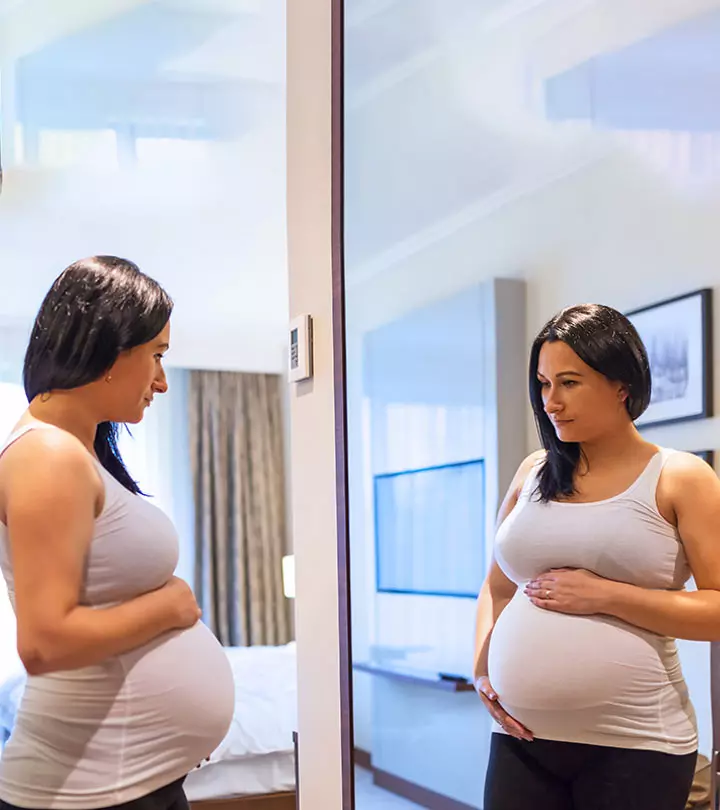
Image: Shutterstock
Feeling your stomach tighten or experiencing contractions before your due date can make any pregnant woman panic. You start questioning yourself if it is already time for the baby to arrive. There is a high probability that what you are experiencing is known as Braxton Hicks contractions [1].
These contractions can happen anytime between the second and third trimester of your pregnancy. Such ‘false’ contractions occur when the uterus begins to contract sporadically. Feeling your abdomen during such contractions will allow you to understand how tight and hard your body is becoming. Such contractions can be unbearably painful as though you are actually about to go into labor.
Now you must be wondering how you can distinguish between real labour contractions and Braxton Hicks contractions. Well, there are actually quite a few distinguishable features between real contractions and these so-called fake contractions. For instance, real labor contractions tend to become stronger and more frequent as you get closer and closer to your delivery. On the other hand, fake contractions are random in occurrence but do not get any stronger or weaker over time.
Braxton Hicks contractions can be anywhere from two to six contractions in an hour. These contractions tend to subside after an hour. However, if you feel that the consistency of these contractions does not seem to change even during the next hour, then it is likely that you are genuinely experiencing labor pain. Braxton Hicks contractions last for approximately 30 seconds and can occur multiple times within an hour or a day. On the other hand, labor contractions can last anywhere between a few seconds to a whole minute.
Labor contractions can quickly change in intensity or duration. This means that they can easily be endured or may come in excruciating waves of pain. Whereas false contractions do not change in intensity and can usually be endured by the mother.
There may be times where you may confuse pain from other sources as contractions. Since the bladder is roughly in the same place as the uterus, a mother who may be suffering from some sort of gastrointestinal issue or muscle pulls may not be able to tell the difference between such issues and contractions.
Let your doctor know if the pain you feel from contractions is actually coming from a slightly different place than previously experienced. With accurate information, a doctor can perform a proper diagnosis of your pain and administer the necessary medical aid.
Another easy way to distinguish between Braxton Hicks contractions and labor pain is to change your position during the contractions. If stand up or sit upright and feel that the pain has reduced or gone completely then you were most likely experiencing false contractions. However, if the pain remains no matter what position you are in, then it is highly probable that you are experiencing labor pains.
It is important for a mother to keep an account of the duration and intensity of her contractions before deciding to rush to the hospital. By letting your doctor know these details, they can tell you whether or not you need to make a visit to the hospital or simply stay put at home and endure the false contractions.
As far as the pain is considered, you should not be worried about it as long as it remains irregular. These false contractions are just a way for your body to prepare itself to endure the pain on the due date.












